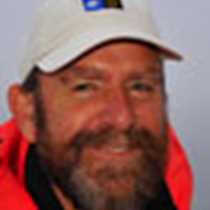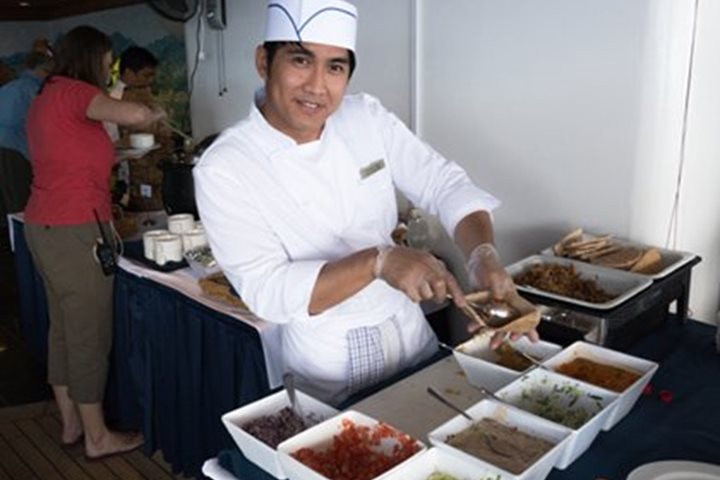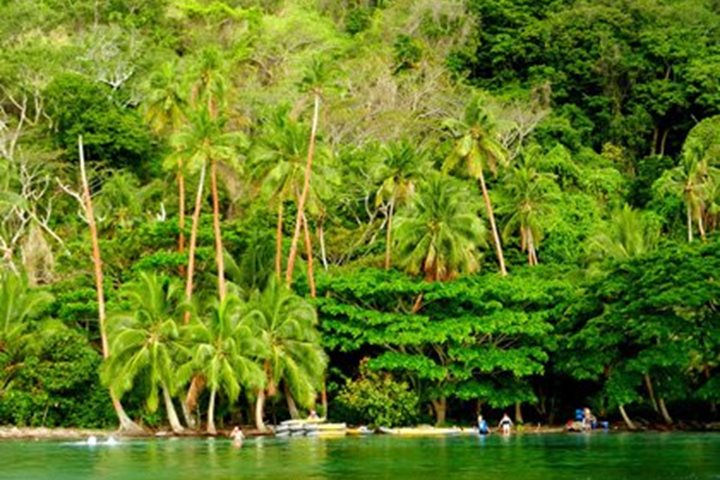After two days in the Solomons we are now steaming steadily southeast for Vanuatu, first named “New Hebrides” by the incomparable Captain Cook. The sun was up before most of us, but on the observation deck that wonderful warm breeze was the perfect hairdryer after a morning shower. We have a steady southeast trade wind today, right on the bow, but the ship rides more comfortably now after some confused swells yesterday afternoon. Early birders espied both tropical and wedge-tailed shearwaters sweeping across our track, with flying fish skittering away from the bow like spray.
After two hectic days this 500-mile passage to Vanuatu is a chance to relax, find our way round the ship, and attend lectures from our naturalists. Mike Greenfelder gave an entertaining introduction to reef fish identification, illustrated with video clips of the varied behaviour of ten major fish families. Next, National Geographic photographer Kevin Schafer dazzled us with stunning images from a lifetime close to wildlife, penguins from Antarctica, river dolphins from the Amazon, and his latest project, a series of portraits of critically endangered species from Brazil to Sulawesi.
Lunch on the afterdeck was a pleasure, wafted as we were by warm zephyrs from the ocean. Next task was to distribute snorkelling gear which became a fancy dress frenzy on Deck 6 as folks tried on masks, flippers, wetsuits and rash vests before drifting back to their cabins as happy dapper snorkelers.
Our afternoon lecture by Yvonne Carillo-Huffman illustrated the art, beliefs and ceremonies of the Solomon islanders using a unique archive of photos from the 1930s. She showed how feather belts and shell necklaces were highly prized currency, sufficient to buy a bride. Also the key role of tuna (“bonito”) and shark in their culture and symbolism, and how frigatebird, turtle and snake also represented class totems. Most dramatic of all were the use of huge traditional war canoes by headhunters for raiding nearby islands to stockpile skulls for status and ceremony.
After tea, Lida Teneva gave our last lecture on coral reefs, explained their strange lifestyle, a feeding partnership between algae and tiny animal polyps. More importantly she outlined the current threats of pollution, siltation and the scourge of crown-of-thorns starfish. While coral cores can be used to measure the frequency and impact of historical El Niño events, ironically these periods of intense ocean warming represent the most serious impact through coral bleaching. After a vivid sunset to starboard, there was much to feed our discussions over dinner.






